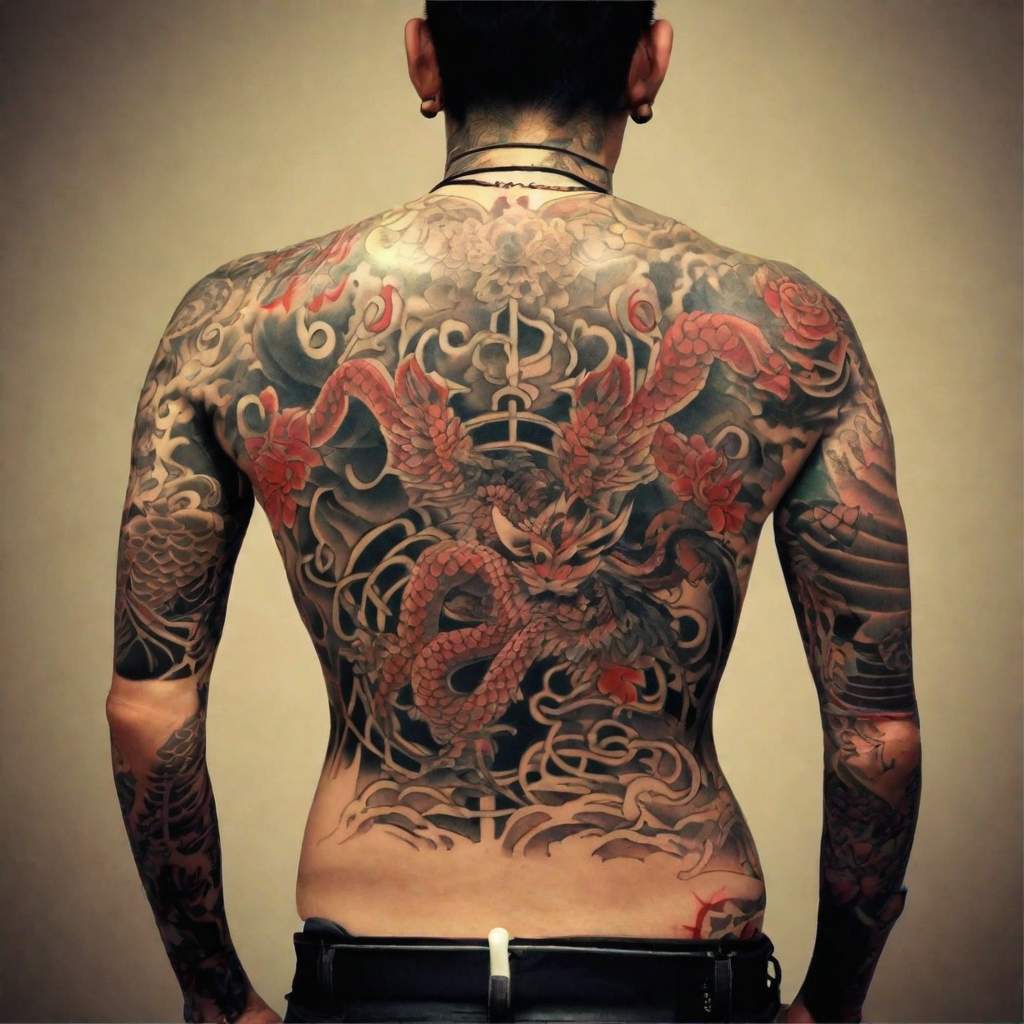Those familiar with Japanese gangsters, or yakuza, will know their bodies are often adorned from head to toe in elaborate and colorful full-body tattoos known as irezumi. For outsiders, these dramatic and painstaking tattoos can seem like a bizarre form of body modification. However, within yakuza culture they hold deep traditional meanings and symbolism – even if the meanings are not always as straightforward as they seem. Let’s take a closer look at the fascinating world of yakuza tattoos.
A Status Symbol and Rite of Passage
Traditionally, getting tattooed was a rite of passage for yakuza recruits to prove their allegiance and toughness. The extensive tattooing process was incredibly painful, sometimes taking years to complete, and served as a test of endurance. More tattooed skin indicated higher status within the organization. Full-body suits were seen as the pinnacle achievement, signifying someone of importance. To this day, the amount of visible tattooed skin remains an indicator of rank – with those higher up requiring long-sleeve shirts even in summer to maintain an air of mystery and authority.
Hidden Messages and Symbols
On the surface, yakuza tattoos depict stunning imagery drawn from Japanese mythology – dragons, carp, tigers and phoenixes featured heavily. However, hidden within the intricate designs are codes and symbols that yakuza used to communicate secretly. Certain motifs indicated someone’s crimes, reputation, affiliations and past transgressions. Placement of elements also held meaning – dragons on the back representing leadership qualities, for example. However, decades of suppression by police have led to many original meanings being lost or distorted over time. Some symbols even took on contrary meanings to confuse outsiders. So decoding yakuza body art remains part ambiguous myth and part educated guesswork!

Outlaw Artform
From the 17th century, drastic anti-tattoo laws were introduced in Japan to visually distinguish outcasts like yakuza from ordinary citizens. As a result, irezumi developed into a defiantly covert art practiced underground. Secret tattoo parlors known as hori-beya operated without licenses. Apprentices learned intricate techniques through years of mentoring. Traditional tattooing relied on bundles of bamboo and metal needles tied to the artist’s fingers for application. It was grueling, painstaking handwork, with smudged lines acceptable and even celebrated as a badge of honor. Today, modern electric tattoo machines are sometimes used but the traditional techniques endure.
Yakuza Tattoo Artists
Hori or tattoo masters achieved legendary status, their skills highly prized. Some like the celebrated Horiyoshi III attained godlike reverence within the tattoo community for their artistic brilliance and dedication to tradition. tattooing others for over 80 years until his death in 2006 aged 97. Even in retirement, he was said to do 10-30 tattoos per week. Despite laws endorsing discrimination against tattooed people to this day in hot springs/beaches/gyms etc, revered elderly tattoo artists like the late Horiyoshi III enjoyed almost saintly respect from those who recognized their talent. Their apprentices still carefully preserve and develop these treasured traditions today.
A Dying Art Form?
In modern Japan, organized crime groups like the yakuza face increased government crackdowns. With decreased prestige and incomes, fewer young men see gang life as worthwhile. At the same time, tattoo taboos are slowly lifting. Some predict the elaborate full body suit tradition could fade within a generation. However, efforts are underway to preserve the art. Several former yakuza have opened legal tattoo studios in Japan, combining traditional and modern techniques. Special exhibitions also tour galleries to educate the public and help overturn historical stigma against tattooing. With any luck, this rich cultural heritage will endure – even if the organizations that birthed it change beyond recognition. The body art of the yakuza may yet survive, controversies and all, as a remarkable art form that outsiders can continue to admire from a respectful distance.